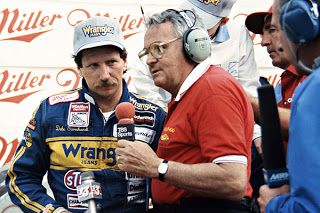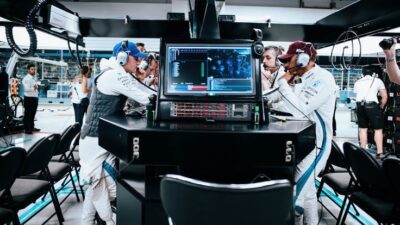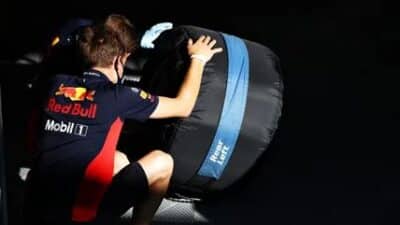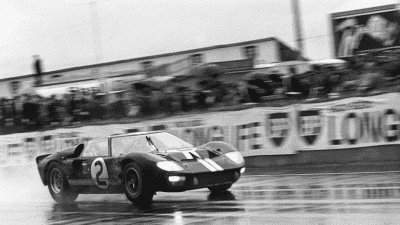The world of motorsport has been shaped by voices that brought the speed, drama, and excitement of racing into millions of homes around the globe. These commentary legends transformed simple race coverage into captivating storytelling that made fans feel like they were right there in the cockpit. Motorsport commentary legends like Murray Walker didn’t just describe what happened on track – they created an emotional connection between viewers and the sport that lasted for generations.
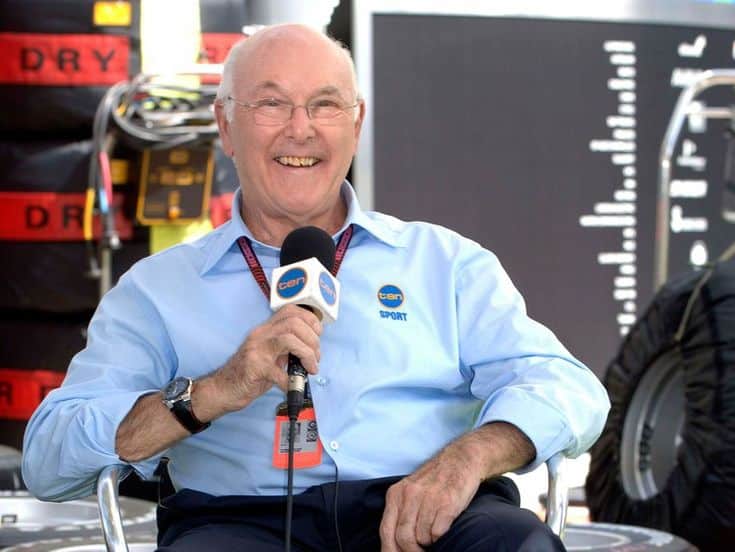
Murray Walker’s enthusiastic commentary style defined Formula 1 for 23 years on BBC and ITV. His famous mistakes, known as “Murrayisms,” became as beloved as his genuine passion for racing. Walker proved that perfect commentary wasn’t about being flawless – it was about bringing pure excitement to every moment.
The impact of these commentary giants extends far beyond just calling races. They shaped how entire generations understood and loved motorsport. Their voices became the soundtrack to some of racing’s most memorable moments, turning drivers into heroes and races into legends that fans still talk about today.
Key Takeaways
- Commentary legends transformed motorsport from simple race coverage into emotional storytelling that connected viewers to the sport
- Murray Walker’s 23-year career and famous “Murrayisms” proved that passionate commentary was more valuable than perfect delivery
- These influential voices created lasting cultural impact by turning racing moments into legendary memories that defined the sport for generations
Defining Motorsport Commentary Legends

Motorsport commentators serve a vital function in racing, providing real-time analysis that enhances the viewing experience. True legends in this field combine deep technical knowledge with storytelling abilities that make races memorable for generations of fans.
The Role and Impact of Commentators
Motorsport commentators transform racing events from simple competitions into compelling narratives. They provide crucial context about race strategies, car performance, and driver dynamics that casual viewers might miss.
Commentary legends shape how fans remember historic moments. Their words become part of motorsport history. When dramatic overtakes or championship-deciding moments occur, the commentator’s voice becomes forever linked to that memory.
Key responsibilities include:
- Explaining complex technical aspects in simple terms
- Building tension during close battles
- Providing background stories about drivers and teams
- Maintaining energy throughout long races
F1 commentators face unique challenges. They must track 20 cars simultaneously while explaining aerodynamics, tire strategies, and pit stop decisions. The best commentators make this complexity accessible to both newcomers and longtime fans.
The impact extends beyond individual races. Legendary voices help grow motorsport’s popularity by making events engaging for television audiences. They create emotional connections between viewers and the sport.
Characteristics of Legendary Voices
Sports commentary requires a unique blend of storytelling, analysis, and improvisation. Legendary commentators possess deep sport knowledge combined with quick thinking abilities.
Essential qualities include:
| Characteristic | Description |
|---|---|
| Technical Knowledge | Understanding of car mechanics, racing rules, and strategies |
| Vocal Delivery | Clear pronunciation and ability to build excitement |
| Storytelling | Weaving compelling narratives about drivers and rivalries |
| Adaptability | Reacting smoothly to unexpected race developments |
Murray Walker exemplified these traits, with his occasional slip-ups actually enhancing his legendary status. His enthusiasm and genuine mistakes made him relatable to fans.
Modern legends like Alex Jacques and Leigh Diffey demonstrate how extensive preparation combined with natural delivery creates memorable commentary. They spend days researching before each race but deliver spontaneous reactions during key moments.
The best commentators develop signature phrases and calling styles. Their voices become instantly recognizable to motorsport fans worldwide.
Murray Walker: The Iconic Voice of Formula 1

Murray Walker transformed Formula 1 commentary from 1978 to 2001, becoming the sport’s most recognizable voice through his passionate delivery and encyclopedic knowledge. His career spanned the BBC and ITV eras, covering legendary drivers from James Hunt to Michael Schumacher.
Early Life and Career Beginnings
Graeme Murray Walker was born in Birmingham in 1923. His connection to motorsport began through his father, Graham Walker, who was a successful motorcycle racer and commentator.
Murray served as a Captain in the British Army during World War II. After the war, he briefly competed in motorcycle racing himself before transitioning to a career in advertising.
His broadcasting career started in 1949 when he first appeared on television at the British Grand Prix. During his early years, he covered various motorsport events including the Isle of Man TT motorcycle races.
Walker’s advertising background proved valuable for his broadcasting work. He understood how to communicate complex information to diverse audiences, making technical racing details accessible to casual viewers.
BBC and the Rise to Fame
Murray Walker became Formula 1’s main commentator from the 1978 season onwards at the BBC. This marked the beginning of his legendary career covering Grand Prix racing.

His partnership with former world champion James Hunt created one of motorsport’s most iconic commentary teams. Hunt joined Murray in the commentary box after retiring in 1979, bringing driver insight to complement Walker’s technical knowledge.
Walker’s preparation was meticulous. He used handwritten, color-coded notes and conducted extensive paddock interviews before each race weekend at venues like Silverstone and Monaco.
His enthusiastic delivery style became his trademark. Walker brought unmatched energy to every lap, making even technical moments feel exciting for viewers.
The BBC years established Walker as the voice of Formula 1. His passionate commentary during dramatic moments, including championship-deciding races, cemented his reputation among F1 fans worldwide.
ITV Era and Later Years
Walker moved to ITV Sport and continued his Formula 1 commentary career into the 1990s and early 2000s. This period covered some of the sport’s most competitive eras.
He commentated on the rise of Michael Schumacher and the early career of Lewis Hamilton. His emotional reaction to Damon Hill’s 1996 championship victory demonstrated his genuine passion, famously saying he had “a lump in his throat.”
Walker became known for his verbal slip-ups, affectionately called “Murrayisms.” These mistakes only made him more endearing to fans and became part of his charm.
Murray Walker retired from full-time Formula 1 commentary in 2001 after covering the sport for over two decades. His final years in broadcasting coincided with F1’s transition to the modern era.
Walker passed away in 2021 at age 97, leaving behind a legacy as motorsport’s greatest commentator. His voice remains synonymous with Formula 1’s golden age.
Memorable Partnerships and Legendary Moments

The greatest commentary partnerships combined racing expertise with broadcasting skill to create unforgettable calls. Murray Walker’s collaborations with former drivers brought technical insight to his passionate delivery, while iconic F1 commentator moments showcased how these teams captured racing’s most dramatic events.
Walker and Hunt: A Dynamic Duo
Murray Walker and James Hunt formed one of motorsport’s most entertaining commentary partnerships during the 1980s and early 1990s. Hunt brought fresh perspective as a former world champion who had battled legends like Prost and faced the pressures of Formula 1’s golden era.
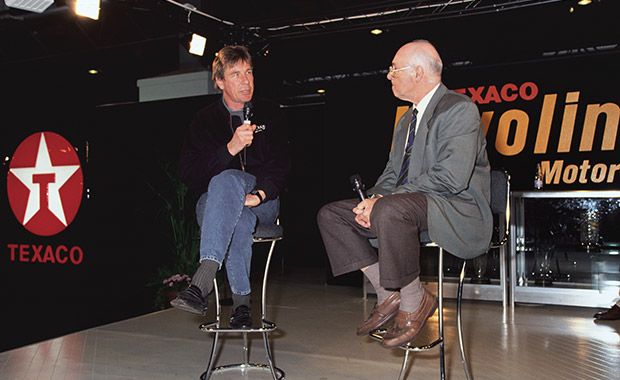
Hunt’s laid-back personality balanced Walker’s excitable style perfectly. Where Walker delivered dramatic race calls, Hunt provided cool analysis and insider knowledge about driver tactics.
Their chemistry shone during tense moments at circuits like Suzuka and Imola. Hunt could explain why Senna chose certain racing lines or predict Michael Schumacher’s pit strategy. Walker handled the emotional peaks while Hunt kept viewers grounded with technical details.
Key Partnership Elements:
- Walker’s passion + Hunt’s experience
- Emotional commentary balanced by technical insight
- Former champion’s credibility with current drivers
- Natural chemistry that entertained audiences
Hunt’s tragic death in 1993 ended this beloved partnership. Their work together set the standard for driver-commentator teams that followed.
Walker and Brundle: New Perspectives
Martin Brundle stepped in after Hunt’s passing, bringing his own racing experience to Walker’s booth. As a contemporary of Senna and Schumacher, Brundle offered current insights into modern F1’s technical evolution.
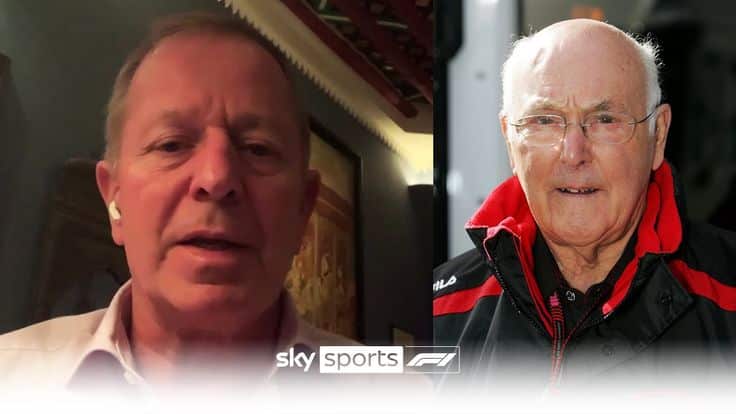
Brundle’s analytical approach complemented Walker’s emotional style differently than Hunt had. He focused more on car setup, aerodynamics, and strategic decisions that casual fans might miss.
Their partnership covered some of F1’s most dramatic moments. Damon Hill’s emotional championship victory at Suzuka showcased how Walker handled pure emotion while Brundle explained the technical achievement.
Brundle brought credibility through his recent racing experience. He had competed against the same drivers he was now describing, offering unique perspective on their strengths and weaknesses.
The Walker-Brundle team lasted through Walker’s retirement, creating a smooth transition between commentary eras while maintaining the high standards viewers expected.
Iconic Race Calls and Historic Events
Commentary legends created unforgettable moments through their calls of racing’s biggest events. Walker’s famous declaration of having “a lump in his throat” during Damon Hill’s championship perfectly captured the emotion millions felt watching.
Legendary Commentary Moments:
- Senna’s dominance at wet races like Monaco
- Schumacher’s controversial tactics and championships
- Hill following his father’s footsteps to the title
- Dramatic crashes and safety improvements at Imola
Walker’s unique phrases became part of racing vocabulary. His “colossally, it’s Mansell!” call during a tire failure showed how he could make even disasters memorable.
Modern commentators like David Croft continue this tradition. His calls of recent victories demonstrate how great commentary captures racing’s emotion across different eras.
These moments prove that great commentary partnerships don’t just describe races – they become part of motorsport history themselves.
The Influence of Murrayisms: Quotes and Cultural Impact

Murray Walker’s verbal slip-ups became as famous as the races themselves, creating a unique cultural phenomenon that reached beyond motorsport fans. These amusing and often factually incorrect quips turned commentary mistakes into beloved entertainment that defined Formula One broadcasting.
Famous Murrayisms and Misquotes
Murrayisms were amusing slip-ups that occurred during Walker’s commentary when he got carried away by his own enthusiasm. These verbal mistakes became so popular they often made newspaper pages and even Private Eye.
Some of his most memorable quotes included perfectly logical contradictions. “Either that car is stationary or it’s on the move” captured Walker’s ability to state the obvious with complete confidence.
Classic Murrayisms:
- “There’s nothing wrong with the car except it’s on fire”
- “With half the race gone there is half the race to go”
- “Unless I’m very much mistaken… I am very much mistaken!”
Walker’s mathematical observations often defied logic. “It would have been Senna’s third win in a row if he’d won the two before” showed how his excitement could override basic reasoning.
Capturing the Drama of F1
Walker’s enthusiastic and loud style helped define grand prix racing for millions of viewers. His passionate delivery made even routine moments feel dramatic and important.
The commentator’s mistakes actually enhanced the viewing experience. When he said “Do my eyes deceive me or is Senna’s car sounding a bit rough?” viewers understood his genuine excitement about Ayrton Senna’s performances.
His influence reached unexpected places. Nelson Mandela was among those who appreciated Walker’s fortnightly commentary, showing how his appeal crossed cultural boundaries.
Walker’s verbal gymnastics continued throughout different eras. His comment about “the young Ralf Schumacher has been upstaged by teenager Jenson Button, who is 20” demonstrated how age calculations could become confusing during live broadcasts.
Other Influential Motorsport Commentary Figures

Motorsport commentary extends far beyond Formula 1, with legendary voices shaping NASCAR, IndyCar, and motorcycle racing coverage. These commentators brought distinct regional flavors and specialized knowledge to their respective racing series.
Distinguished Commentators Beyond F1
Ken Squier transformed NASCAR broadcasting and earned recognition as the father of NASCAR commentary. His calm yet engaging style on CBS broadcasts during the 1970s and 1980s helped bring stock car racing into American homes.
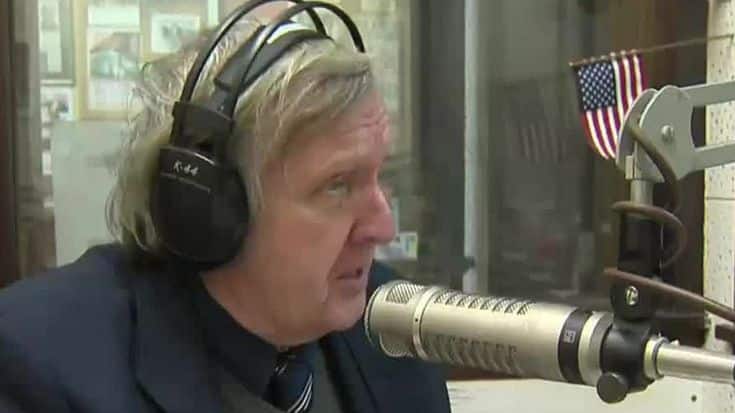
Squier coined the phrase “The Great American Race” for the Daytona 500. His distinctive voice became synonymous with NASCAR’s golden era.
Mike Joy has anchored Fox Sports’ NASCAR coverage since the early 2000s. His encyclopedic racing knowledge and ability to remain composed during intense moments made him a cornerstone of modern NASCAR broadcasting.
Darrell Waltrip brought energy and insider knowledge as a three-time Cup Series champion turned commentator. His famous “Boogity, boogity, boogity!” catchphrase became iconic in NASCAR culture.
Legacy in Various Racing Series
Different racing series developed their own commentary traditions. IndyCar featured voices like Bob Jenkins, whose smooth delivery guided fans through complex oval racing strategies during the 1980s and 1990s.
Motorcycle racing produced specialized commentators who understood two-wheeled competition. The Isle of Man TT requires commentators with deep knowledge of the mountain course’s dangers and technical challenges.
Chris Economaki earned the title “The Dean of American Motorsports” for his work across multiple racing disciplines. He was the first person to bring motorsport news to a national television audience, covering everything from NASCAR to sprint cars.
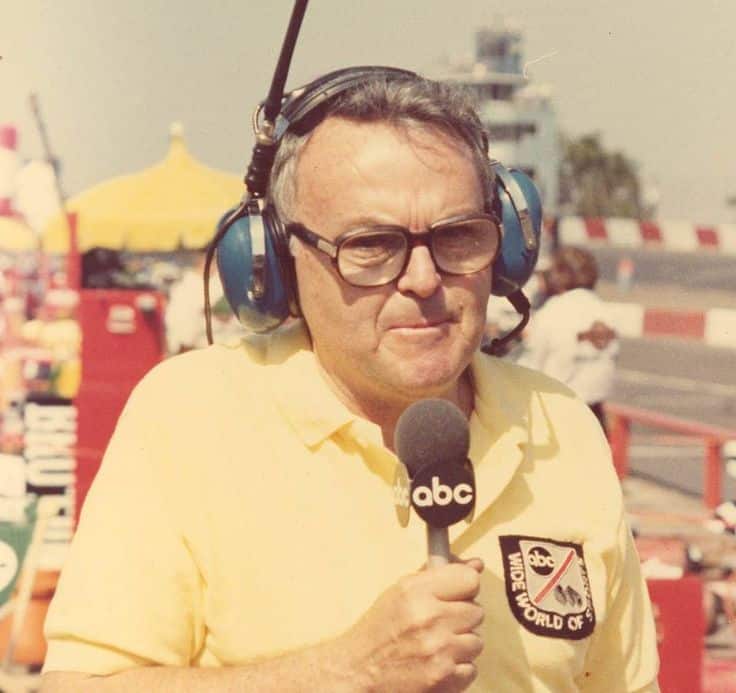
Regional racing series developed their own beloved voices. These commentators often worked with smaller budgets but maintained the same passion and expertise as their network counterparts.
The Lasting Legacy of Motorsport Commentary Legends

Commentary legends have fundamentally transformed how fans experience motorsport while establishing broadcasting standards that continue shaping modern coverage. Their passionate delivery styles and memorable phrases have created lasting connections between audiences and the sport across multiple generations.
Impact on Fans and Broadcast Media
Motorsport commentators have redefined the viewer experience through their distinctive broadcasting approaches. Murray Walker’s enthusiastic style during his 23 years as lead F1 commentator helped define grand prix racing for millions of fans.
Key Broadcasting Innovations:
- Live emotional storytelling during races
- Technical explanation for general audiences
- Memorable catchphrases and expressions
- Partnership dynamics with co-commentators
Walker’s famous “Murrayisms” became cultural phenomena. His quotes like “There’s nothing wrong with the car except it’s on fire” entered popular culture beyond motorsport circles.
Modern F1 commentator standards still follow patterns established by these pioneers. Today’s broadcasters adopt similar passionate delivery styles while maintaining technical accuracy. The balance between excitement and expertise remains the gold standard.
Television networks worldwide have adopted commentary techniques first popularized by these legends. Their approach to building drama and explaining complex racing situations continues influencing broadcast formats across different motorsport series.
Continuing Inspiration for Future Generations
Commentary legends serve as role models for aspiring motorsport broadcasters entering the field today. Their career paths demonstrate how passion for racing can translate into successful media careers spanning decades.
Young commentators study classic broadcasts to learn timing and phrasing techniques. The legendary voices established professional standards for race commentary that remain relevant in modern broadcasting environments.
Enduring Professional Standards:
- Extensive motorsport knowledge requirements
- Quick reaction abilities under pressure
- Storytelling skills during race action
- Building audience emotional connections
Their influence extends beyond commentary into motorsport culture itself. Fans often remember famous calls as much as the actual race moments themselves.
Educational programs and broadcasting schools frequently use recordings from commentary legends as teaching materials. Students learn voice control and excitement management from these established masters.
The next generation of motorsport voices continues adopting core principles while adapting to modern broadcasting technologies and audience expectations.
Frequently Asked Questions

Murray Walker’s passionate delivery transformed Formula 1 broadcasting from dry race reports into thrilling entertainment. Modern commentators like David Croft and Martin Brundle continue evolving the craft with technical expertise and storytelling skills that capture both seasoned fans and newcomers.
Who are considered the pioneers of motorsport broadcasting?
Murray Walker stands as the most influential pioneer of motorsport commentary. He brought unmatched energy and emotion to Formula 1 broadcasts for over five decades.
John Motson also contributed significantly to early motorsport broadcasting. His precise delivery style influenced many commentators who followed.
Raymond Baxter pioneered television motorsport coverage in the 1960s. He established the foundation for how races should be presented on screen.
What are some of the most memorable quotes from Formula 1 commentators?
Murray Walker delivered countless iconic phrases during his career. “Go, go, go!” became his signature call during exciting race moments.
“Anything can happen in Formula 1, and it usually does” remains one of Walker’s most quoted lines. This phrase perfectly captured the unpredictable nature of the sport.
David Croft’s “It’s lights out and away we go!” has become the modern standard race start call. This phrase signals the beginning of every Grand Prix to millions of viewers.
How has motorsport commentary evolved over the years?
Early motorsport commentary focused primarily on describing what viewers could see. Commentators provided basic race positions and simple observations.
Modern commentary incorporates extensive technical analysis and data interpretation. Teams of experts now explain complex strategies, tire compounds, and aerodynamic concepts to viewers.
Social media integration has changed how commentators interact with audiences. Real-time fan feedback and instant replays allow for more interactive broadcasting experiences.
Which commentators have shaped the way we listen to Formula 1 races?
Murray Walker revolutionized F1 commentary with his emotional delivery style. His passionate approach made races exciting even during slower periods.
Martin Brundle brought professional driver insights to the commentary box. His technical knowledge helps viewers understand racing strategies and driver decisions.
James Hunt provided honest, unfiltered commentary during his broadcasting years. His direct approach influenced how commentators discuss controversial racing incidents.
What qualities define a great motorsport commentator?
Deep knowledge of racing rules and technical regulations proves essential. Great commentators explain complex situations clearly to both new and experienced fans.
The ability to maintain excitement during slow race periods separates good commentators from great ones. They find compelling storylines even when little action occurs on track.
Clear speaking voice and proper pacing allow viewers to follow commentary easily. The best commentators never rush their words or speak too quickly during exciting moments.
Can you list significant contributions made by Murray Walker to motorsport commentary?
Walker introduced emotional excitement to Formula 1 broadcasting. He transformed technical race coverage into entertainment that appealed to casual sports fans.
His signature phrases became part of motorsport culture worldwide. Walker’s expressions like “Murray-isms” added personality and humor to race broadcasts.
Walker mentored many current commentators who learned from his passionate approach. His influence continues shaping how motorsports podcasts and broadcasts present racing content today.
